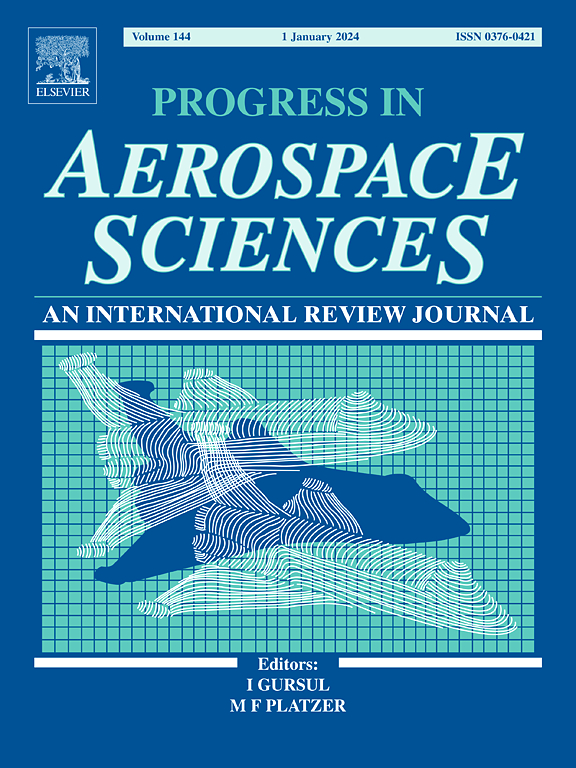The box-wing configuration: a critical review of design approaches and applications
IF 16.2
1区 工程技术
Q1 ENGINEERING, AEROSPACE
引用次数: 0
Abstract
This paper provides an overview of the main applications of the box-wing configuration for transport aircraft. Its main objective is to emphasize, through a proper selection of literature references, the peculiar performance and functional characteristics of the box-wing lifting architecture from the perspective of aircraft design. Two distinct approaches can guide the introduction of innovations within the aeronautical industry. The first is an evolutionary approach, which aims to implement incremental advancements without altering the fundamental framework of the current state of the art. The second is a breakthrough approach, which introduces functional solutions that are not addressed by existing technologies, thus reaching radical changes to established paradigms. The analysis of literature regarding the design and development of box-wing aircraft presented in this paper reveals that a breakthrough approach is essential for effectively integrating this innovation into transport aviation. By examining the application of the box-wing concept across various aircraft categories, ranging from medium-range and regional transport to ultralight aircraft and urban air mobility, the paper highlights the specific performance and functional potential of this configuration. Additionally, it identifies the limitations inherent to basic research and the critical bottlenecks that currently prevent its progression toward industrial implementation.
盒翼结构:对设计方法和应用的批判性回顾
本文综述了箱翼结构在运输机上的主要应用。其主要目的是从飞机设计的角度,通过对文献文献的适当选择,强调箱翼升降结构的特殊性能和功能特点。两种截然不同的方法可以指导航空业引入创新。第一种是渐进式方法,其目的是在不改变现有技术的基本框架的情况下实现渐进式的进步。第二种是突破性的方法,它引入了现有技术无法解决的功能性解决方案,从而对已建立的范例进行了彻底的改变。本文通过对箱式机翼飞机设计与开发相关文献的分析,揭示了将这种创新有效地整合到运输航空中所必需的突破性方法。通过研究箱翼概念在各种飞机类别中的应用,从中程和区域运输到超轻型飞机和城市空中交通,本文强调了这种配置的具体性能和功能潜力。此外,它还指出了基础研究固有的局限性和目前阻碍其向工业实施发展的关键瓶颈。
本文章由计算机程序翻译,如有差异,请以英文原文为准。
求助全文
约1分钟内获得全文
求助全文
来源期刊

Progress in Aerospace Sciences
工程技术-工程:宇航
CiteScore
20.20
自引率
3.10%
发文量
41
审稿时长
5 months
期刊介绍:
"Progress in Aerospace Sciences" is a prestigious international review journal focusing on research in aerospace sciences and its applications in research organizations, industry, and universities. The journal aims to appeal to a wide range of readers and provide valuable information.
The primary content of the journal consists of specially commissioned review articles. These articles serve to collate the latest advancements in the expansive field of aerospace sciences. Unlike other journals, there are no restrictions on the length of papers. Authors are encouraged to furnish specialist readers with a clear and concise summary of recent work, while also providing enough detail for general aerospace readers to stay updated on developments in fields beyond their own expertise.
 求助内容:
求助内容: 应助结果提醒方式:
应助结果提醒方式:


